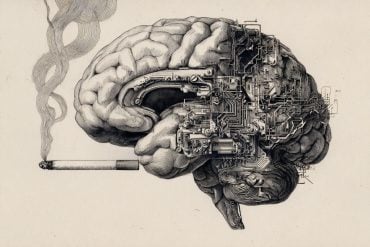Summary: A new attention model reveals how the human brain allocates limited perceptual resources to focus on goal-relevant information in dynamic environments. Researchers developed “adaptive computation,” a system that prioritizes important visual details—like traffic signals over flashy cars—based on task relevance.
In experiments tracking multiple moving objects, the model successfully predicted where attention would be directed and how difficult people found the task. These findings shed light on why distractions often fade from awareness when we’re focused, and how our brains optimize attention in real time.
Key Facts:
- Adaptive Computation: The brain prioritizes perceptual effort based on goals, filtering out distractions.
- Dynamic Attention: Attention shifts rapidly and flexibly in response to changing visual demands.
- Human-Like AI: The model may help build AI systems that ignore irrelevant stimuli like humans do.
Source: Yale
A person’s capacity for attention has a profound impact on what they see, dictating which details they glean from the world around them. As they walk down a busy street, the focus of their attention may shift to a compelling new billboard advertisement, or a shiny Lamborghini parked on the curb.
Attention, however, can be fleeting. When that person reaches a busy intersection, for instance, details of the billboard or sportscar disappear. The person’s attention instead becomes focused on approaching or stationary traffic, the flashing walk sign, and other pedestrians they’ll need to avoid in the crosswalk.

Most research on attention has concentrated on what happens when we notice the new billboard or shiny car.
But in a new study, Yale psychologists instead focus on what happens when our attention shifts to a specific goal, such as navigating the busy intersection.
Writing in the journal Psychological Review, the researchers unveil a human attention model that explains how the mind evaluates what is task-relevant in complex, dynamic scenarios — and apportions computational capacity in response.
“We have a limited number of resources with which we can see the world,” said Ilker Yildirim, assistant professor of psychology in Yale’s Faculty of Arts and Sciences and senior author of the study.
“We think of these resources as elementary computational processes; each perception we experience, such as the position of an object or how fast it’s moving, is a result of exerting some number of these elementary perceptual computations.”
For the study, the researchers developed a system which they call “adaptive computation,” which is essentially a software program that rations these elementary computations in order to more deeply process goal-relevant objects. For example, when a person crosses a busy street, adaptive computation would prioritize the pedestrian walk sign over the shiny car.
“Our model reveals a mechanism by which human attention identifies what things in a dynamic scene are relevant to the goal at hand, and then rations perceptual computations accordingly,” said Mario Belledonne, a graduate student in Yale’s Graduate School of Arts and Sciences and co-author of the study.
In one experiment, they presented volunteer participants with eight identically colored circles on a computer screen. The researchers then highlighted a group of four circles and asked the participants to track the highlighted circles as all eight circles moved randomly across the screen. Such tracking of multiple objects at the same time elicits a complex, dynamic ebb and flow of attention among the participants.
Researchers measured these shifts of attention, at sub-second thresholds, by asking subjects to hit the space bar whenever they noticed a flashing dot appear very briefly on a specific object.
The frequency with which these flashing dots were noticed indicates where and when people are attending, and the adaptive computation model successfully predicted these momentary, fine-grained patterns of attentional deployment.
In another experiment, participants again were asked to track four objects, but in this case the researchers varied how many identically colored “distractor” objects were on the screen and how fast the objects were moving. When the objects stopped moving, researchers asked participants to rate how difficult it was to track them.
The researchers showed that the adaptive computation model also explains these subjective difficulty ratings: The more computational resources the model exerted for tracking, the more difficult it was rated by participants. In this way, the researchers’ model provided a computational signature of the feeling of exertion that occurs when a person focuses attention on the same task for a prolonged period, Yildirim said.
“We want to work out the computational logic of the human mind, by creating new algorithms of perception and attention, and comparing the performance of these algorithms to that of humans,” he said.
The model also helps make sense of what’s sometimes considered a “human quirk”: the ability to make perceptions of non-task-oriented objects — such as the billboard or the sports car — disappear while crossing the busy street.
“We think this line of work can lead to systems that are a bit different from today’s AI, something more human-like,” Yildirim said. “This would be an AI system that when tasked with a goal might miss things, even shiny things, so as to flexibly and safely interact with the world.”
The research team also included Brian Scholl, a professor of psychology at FAS, and Eivinas Butkus, of Columbia University, a former member of Yildirim’s lab.
Funding: The research was supported by a grant from U.S. Air Force Office of Scientific Research.
About this neuroscience and attention research news
Author: Bess Connolly
Source: Yale
Contact: Bess Connolly – Yale
Image: The image is credited to Neuroscience News
Original Research: Closed access.
“Adaptive computation as a new mechanism of dynamic human attention” by Ilker Yildirim et al. Psychological Review
Abstract
Adaptive computation as a new mechanism of dynamic human attention
A key role for attention is to continually focus visual processing to satisfy our goals. How does this work in computational terms?
Here we introduce adaptive computation—a new computational mechanism of human attention that bridges the momentary application of perceptual computations with their impact on decision outcomes.
Adaptive computation is a dynamic algorithm that rations perceptual computations across objects on-the-fly, enabled by a novel and general formulation of task relevance.
We evaluate adaptive computation in a case study of multiple object tracking (MOT)—a paradigmatic example of selection as a dynamic process, where observers track a set of target objects moving amid visually identical distractors.
Adaptive computation explains the attentional dynamics of object selection with unprecedented depth.
It not only recapitulates several classic features of MOT (e.g., trial-level tracking accuracy and localization error of targets), but also captures properties that have not previously been measured or modeled—including both the subsecond patterns of attentional deployment between objects, and the resulting sense of subjective effort.
Critically, this approach captures such data within a framework that is in-principle domain-general, and, unlike past models, without using any MOT-specific heuristic components.
Beyond this case study, we also look to the future, discussing how adaptive computation may apply more generally, providing a new type of mechanistic model for the dynamic operation of many forms of visual attention.






